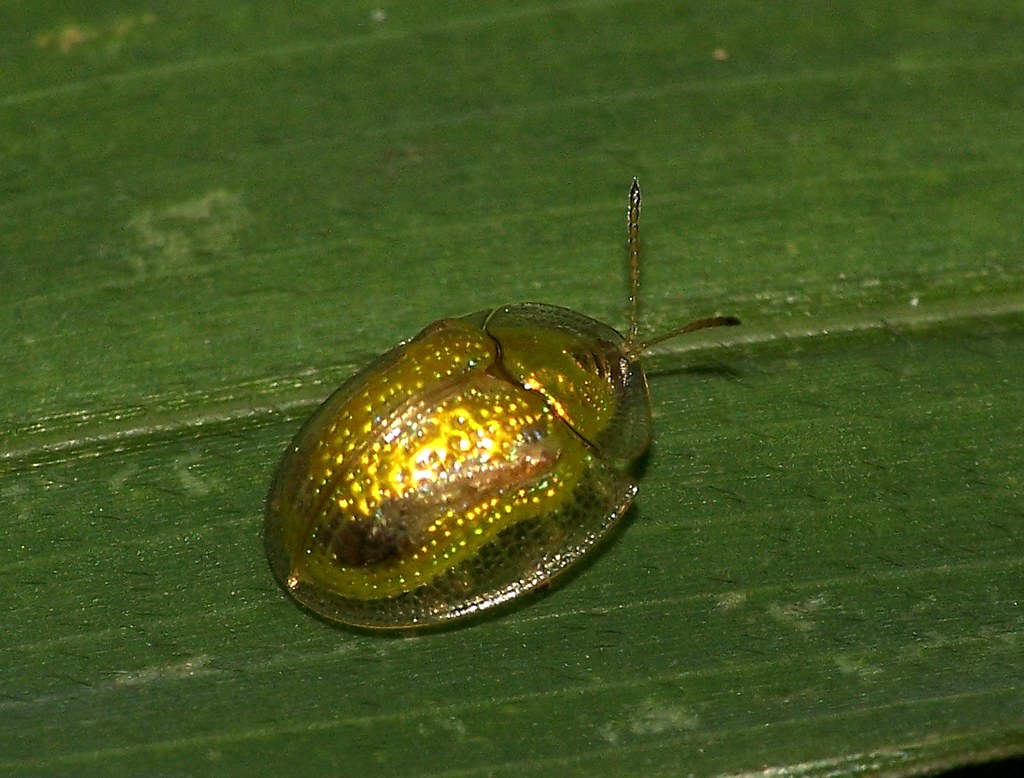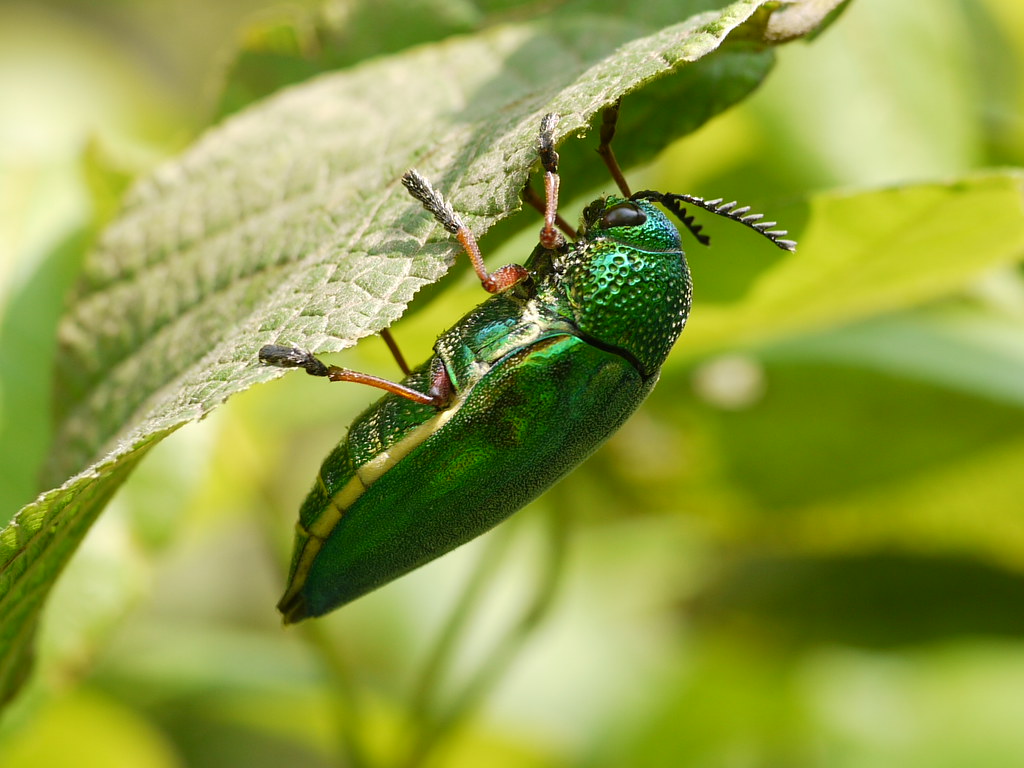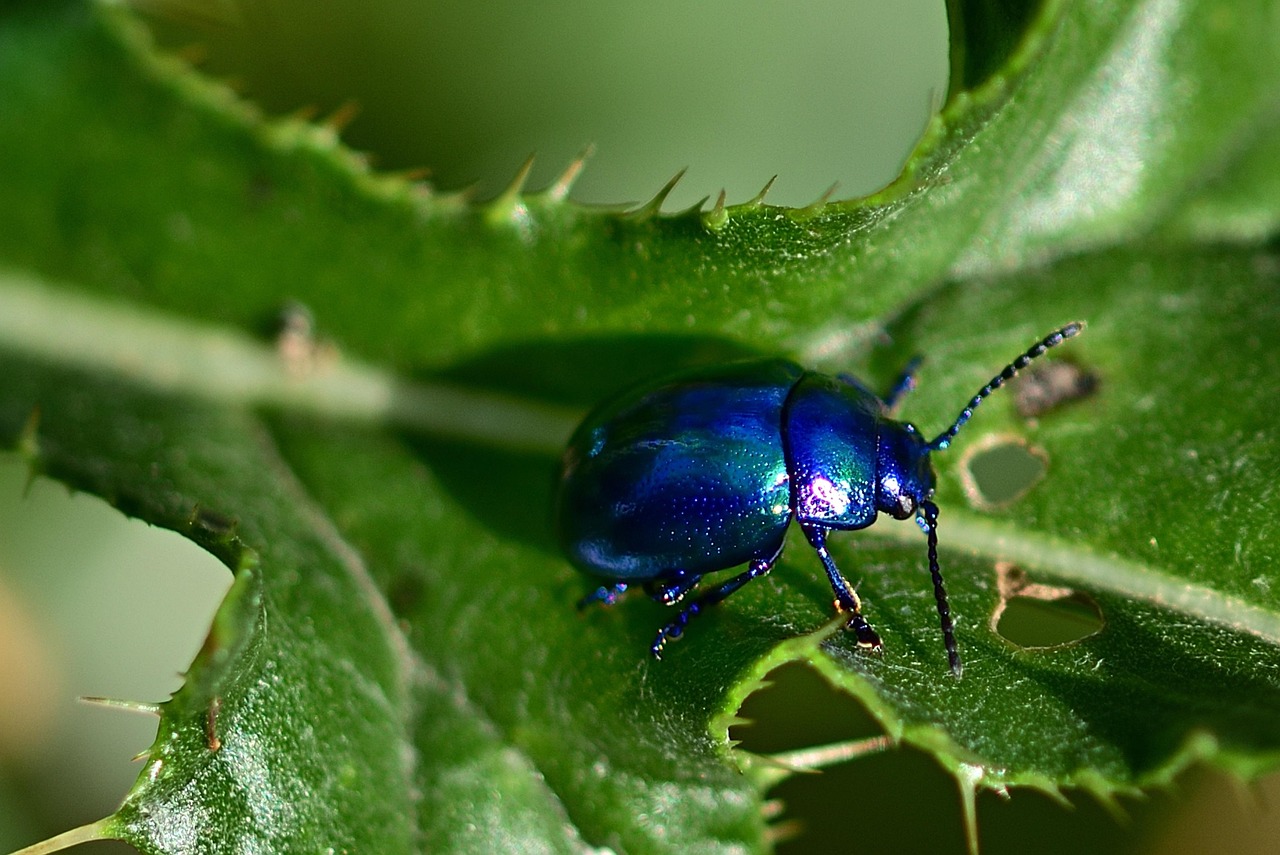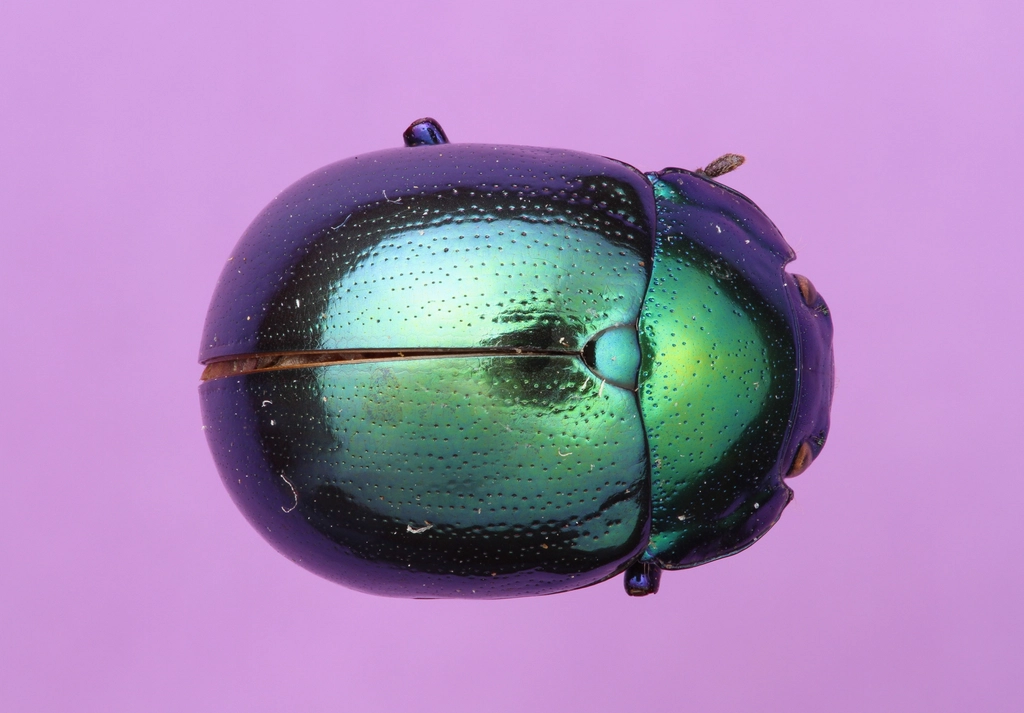Imagine walking through a tropical forest when suddenly, a flash of emerald green catches your eye. You lean closer, expecting to find a dropped earring or scattered gemstone, only to discover something far more extraordinary – a living beetle whose shell gleams with the brilliance of a precious jewel. These metallic marvels aren’t wearing makeup or artificial coatings. Their dazzling colors come from millions of years of evolution, creating some of nature’s most spectacular displays of living artistry.
The Science Behind Nature’s Metallic Masterpieces

The secret to these beetles’ stunning appearance lies in microscopic structures called iridophores within their exoskeletons. These specialized cells contain layers of reflective materials that bounce light back in specific wavelengths, creating those brilliant metallic hues we see. Unlike pigments that absorb certain colors, these structural colors work like tiny mirrors, reflecting light to produce shimmering effects that change as the beetle moves. The process is similar to how oil on water creates rainbow patterns, but far more sophisticated and permanent. This biological engineering has inspired scientists to develop new materials for everything from car paint to security features on currency.
Golden Scarabs: The Pharaohs’ Favorite Insects

Golden tortoise beetles transform from shimmering gold to dull copper when disturbed, earning them the nickname “goldbug.” These North American natives can control their metallic sheen by adjusting moisture levels beneath their transparent outer shell. When calm, they appear like drops of liquid gold crawling across leaves, but stress causes them to lose their luster instantly. Ancient Egyptians would have been fascinated by these living treasures, as they revered golden scarab beetles as symbols of rebirth and the sun god Ra. The ability to literally dim their shine serves as camouflage, helping them blend into brown, dried leaves when predators approach.
Emerald Jewel Beetles: Forest Floor Treasures
Chrysochroa species, commonly known as jewel beetles, display emerald greens so vivid they rival the finest Colombian emeralds. These Southeast Asian beauties have shells that seem to glow from within, thanks to multiple layers of microscopic platelets that create interference patterns with light. Some species can shift from deep forest green to brilliant blue-green depending on the viewing angle, like a natural hologram. The intensity of their color often indicates the beetle’s health and age, with younger specimens showing the most vibrant hues. Traditional craftspeople in Thailand and Myanmar have historically used these beetle wing covers in jewelry and decorative artwork, treating them as genuine gemstones.
Ruby-Red Fire Beetles: Living Garnets
The red-orange glow of fire beetles creates an illusion of smoldering embers among forest debris. These magnificent insects achieve their ruby-like appearance through a combination of structural coloration and red pigments working together. Unlike purely structural colors, the fire beetle’s crimson hue remains consistent across different lighting conditions, making them appear like scattered garnets in their natural habitat. Many species are most active during dawn and dusk, when their red coloration helps them blend with the warm light filtering through trees. Their name comes not just from their color, but from the way sunlight seems to ignite their shells with an inner fire.
Sapphire Weevils: Blue Diamonds of the Bug World
Eupholus weevils from New Guinea showcase electric blues that rival the finest sapphires, often accented with intricate black patterns that look hand-painted. Their coloration is so intense that even museum specimens retain their brilliant blue shine decades after death. These weevils use their spectacular coloring as a warning signal to predators, advertising that they taste terrible and may be toxic. The geometric patterns on their backs vary between species and individuals, making each beetle as unique as a fingerprint. Some collectors prize these insects so highly that they’re sold as living jewelry, though this practice raises serious conservation concerns.
Copper Chafers: Bronze Age Beauties

Copper chafer beetles gleam with the warm glow of burnished bronze, their shells reflecting light like polished metal. These impressive insects can grow quite large, with some species reaching nearly two inches in length and displaying their metallic sheen across proportionally massive bodies. The copper coloration serves multiple purposes beyond beauty – it helps regulate body temperature by reflecting excess heat and may play a role in species recognition during mating season. Many copper chafers are nocturnal, and their metallic shells can be spotted from considerable distances when caught in artificial lighting. The interplay between their copper base color and darker bronze accents creates depth that makes them appear three-dimensional even from a distance.
Violet Ground Beetles: Purple Royalty

Few sights in nature are as breathtaking as a violet ground beetle catching morning sunlight with its deep purple-black carapace. These predatory beetles combine function with form, using their dark coloration for nighttime hunting while the purple iridescence serves as species identification among their own kind. The violet sheen appears most prominently along the edges of their wing covers, creating elegant racing stripes of color. Some species can live for several years, unusual longevity for beetles, and their colors actually intensify with age as their shells harden and develop more complex light-reflecting structures. Their royal purple hue has made them symbols of nobility in several cultures where they’re found.
Silver Leaf Beetles: Mercury Mirrors
Silver leaf beetles achieve their mirror-like finish through incredibly smooth shell surfaces that reflect light like polished metal. These remarkable insects can appear almost liquid as they move, their entire bodies seeming to flow like mercury across plant surfaces. The silver coloration helps them blend with the undersides of leaves, where many species feed, creating natural camouflage against their preferred habitat. When sunlight hits these beetles at the right angle, they can create blinding flashes of reflected light that startle predators long enough for escape. Their reflective properties are so effective that researchers study them to improve solar panel efficiency and develop better reflective coatings.
Rainbow Beetles: Nature’s Prism Effects
Some beetles display entire spectrums of color, shifting through the rainbow as they move or as viewing angles change. These prismatic insects achieve their effects through incredibly complex multilayer structures in their shells that break white light into component colors. Chrysina aurigans, found in Central America, appears golden from above but flashes green, blue, and purple from the sides, like a living kaleidoscope. The rainbow effect serves as both camouflage and communication, allowing beetles to blend into different environments while signaling to potential mates. Scientists believe these complex optical systems represent millions of years of evolutionary fine-tuning, creating biological structures more sophisticated than many human-made optical devices.
Metallic Tigers: Striped Jewels
Tiger beetles combine speed with spectacular metallic coloration, creating insects that look like racing cars designed by nature. Their bodies often display metallic green or bronze base colors with contrasting stripes or spots that enhance their fierce appearance. These predatory insects are among the fastest-running beetles, and their metallic shells may help confuse prey by creating visual distortions as they move. The combination of metallic coloration and bold patterns makes them unmistakable in their habitats, serving as both warning coloration and species identification. Some species can change the intensity of their metallic sheen based on temperature, appearing duller in cooler weather and more brilliant when warm.
Opal Beetles: Iridescent Dreams

Perhaps the most magical of all metallic beetles are those that display opalescent qualities, showing multiple colors that seem to swim beneath their transparent shells. These insects achieve their opal-like appearance through multiple layers of different refractive materials that create complex interference patterns. Like precious opals, these beetles can display flashes of green, blue, orange, and pink all within the same individual, depending on lighting and viewing angle. The opalescent effect is most pronounced in freshly emerged adults, gradually becoming less dramatic as the beetles age and their shells weather. This temporary peak of beauty has led some cultures to associate these beetles with the fleeting nature of youth and beauty.
Black Diamond Beetles: Dark Elegance
Not all metallic beetles shine with bright colors – some display the sophisticated elegance of black diamonds, with deep, dark shells that gleam with subtle rainbow overtones. These beetles achieve their diamond-like quality through incredibly dense arrangements of microscopic structures that create depth while maintaining darkness. The effect is similar to high-quality black pearls, where the dark surface holds hints of color that appear and disappear with movement. Many black diamond beetles are found in desert environments, where their dark coloration helps them absorb heat quickly during cool mornings while the reflective qualities prevent overheating in intense sun. Their understated elegance often makes them more prized by collectors than their more colorful cousins.
Pearl-Shelled Beetles: Lustrous Perfection
Some beetles achieve the lustrous quality of fine pearls, with shells that seem to glow with inner light rather than simply reflecting external illumination. This pearl-like quality comes from incredibly thin, alternating layers of different materials that create depth and luminosity. Pearl beetles often inhabit humid environments where their lustrous shells help them blend with wet surfaces and morning dew. The pearlescent quality serves practical purposes beyond beauty – the multiple reflecting layers help protect the beetle from harmful UV radiation while maintaining optimal body temperature. These living pearls demonstrate how evolution can create beauty that rivals the finest human craftsmanship.
Platinum Beetles: Rare Metal Mimics
The rarest of metallic beetles display platinum-like coloration, appearing almost white-silver with incredible reflective properties. These insects are often found in extreme environments like high-altitude mountains or desert regions, where their reflective shells provide crucial protection from intense solar radiation. The platinum appearance results from specialized cells that reflect nearly all wavelengths of light equally, creating pure metallic shine without color bias. Many platinum beetles are active during the brightest parts of the day, using their reflective properties to stay cool while hunting or foraging. Their rarity in collections makes them among the most sought-after insects, though their specialized habitat requirements make them difficult to study and protect.
Conservation of Nature’s Living Gems

Many of these spectacular metallic beetles face increasing pressure from habitat loss, climate change, and overcollecting for commercial purposes. The very beauty that makes them remarkable also makes them targets for illegal collection, with some rare species selling for hundreds of dollars each on black markets. Conservation efforts focus on protecting their natural habitats and educating collectors about sustainable practices and captive breeding programs. Scientists worry that we may lose these living jewels before fully understanding the complex mechanisms behind their beauty or their ecological roles. The preservation of these metallic marvels requires global cooperation and recognition that their value extends far beyond their appearance to encompass their scientific importance and role in ecosystem health.
These living gems remind us that nature’s artistry surpasses human imagination, creating beauty that serves evolutionary purposes while inspiring wonder in all who encounter it. Every metallic beetle represents millions of years of refinement, a testament to the power of natural selection to create both function and breathtaking beauty. What other treasures might be waiting in the unexplored corners of our world, shining like scattered jewels among the leaves?

